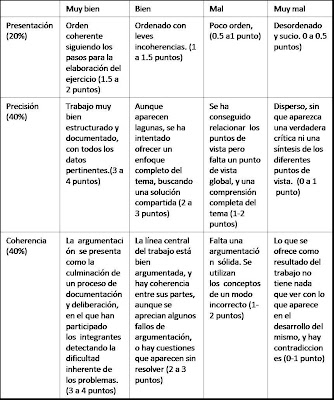The work presented here the Seminar on the History of Mexico, "Tlamatinime" is the complementary product for the academic year 2007-2008. The theme is "Water in the Basin of Mexico," Pre-Hispanic period to the twenty-first century.
The procedure used was the Web page of the portal Quest Eduteka academic. Subsequently worked with the Front Page program for creating Web pages, which designed the Web Quest.
The spread of work on the net, he means the creation of five bloggers, not having access to a server.
The Web Quest is a technical and intellectual appropriate for two reasons:
a) It is in cyberspace, which involves specialized management of computing.
b) The Quest, is notable for the explanation that guides the teacher to get their students: knowledge and ability to analyze documents, information processing, evaluation of data and finally, the realization of work, are: solving a problem, a summary of their own reflections, the construction of graphic organizers, etc.
The work was carried out according to the History of Mexico Program l ll.
Periodization was to consistently address both the course and work by members of the seminar.
5 Bloggers were constructed, as follows: 1 .-
Prehispanic Mexico. Prepared by professors: José Refugio Guzman Rodriguez (CCH Oriente) and Graciela Maldonado Figueroa (CCH CCH Vallejo and East) http://elaguamexicoprehispanico.blogspot.com/
2 .- Cologne. Issued by the teacher: Miguel Pineda Carlos Esquivel (CCH Oriente) http://elaguamexicocolonia.blogspot.com/
3 .- nineteenth century. Produced by teachers: Hector Bernal González (CCH Azcapotzalco) and Ma de Lourdes Pirod Posada (CCH Naucalpan) http://elaguaenmexicosxix.blogspot.com/
4 .- twentieth century. Issued by the teacher: Erendira López Cornejo (CCH Oriente) http://elaguamexicosigloxx.blogspot.com/
5 .- XXI Century. Prepared by professors: Susana Huerta González (CCH Azcapotzalco) and Nancy Martinez Vargas (CCH South)
http://elaguamexicosigloxxi.blogspot.com/
invite the school community of the College of Sciences and Humanities, interact and participate retroalimentadoramente!.
The Web Quest was technically created and uploaded to the network through e-mail address above, by teachers: BERNAL HECTOR HUERTA GONZÁLEZ AND SUSANA GONZALEZ.
Technical direction was provided by: RODRIGO ROSALES JAVIER ENRIQUEZ.
2009.
 Sources
Sources 

 Water distribution
Water distribution 






